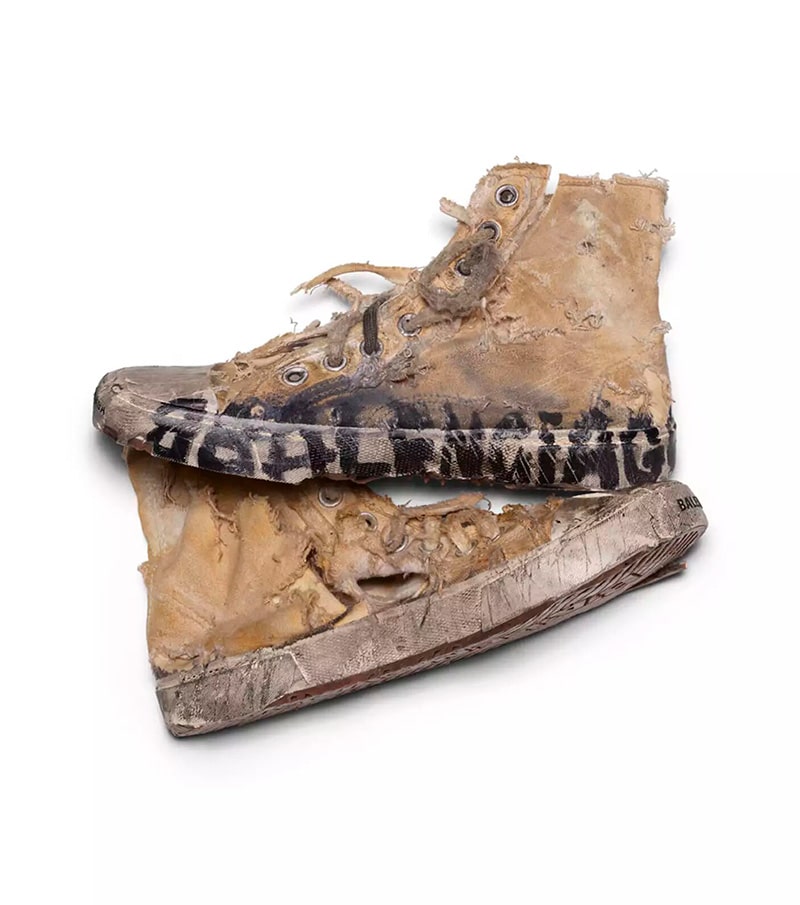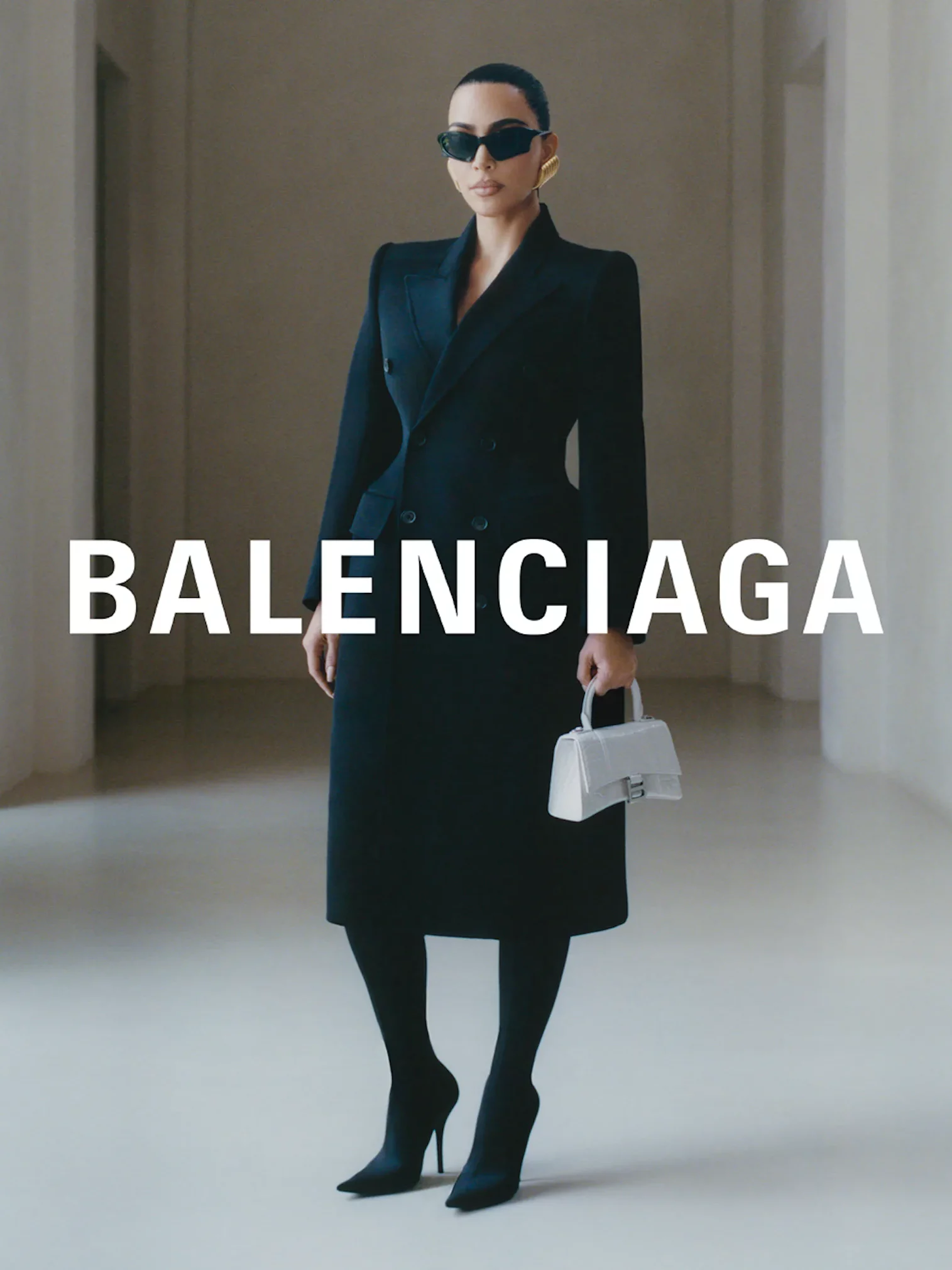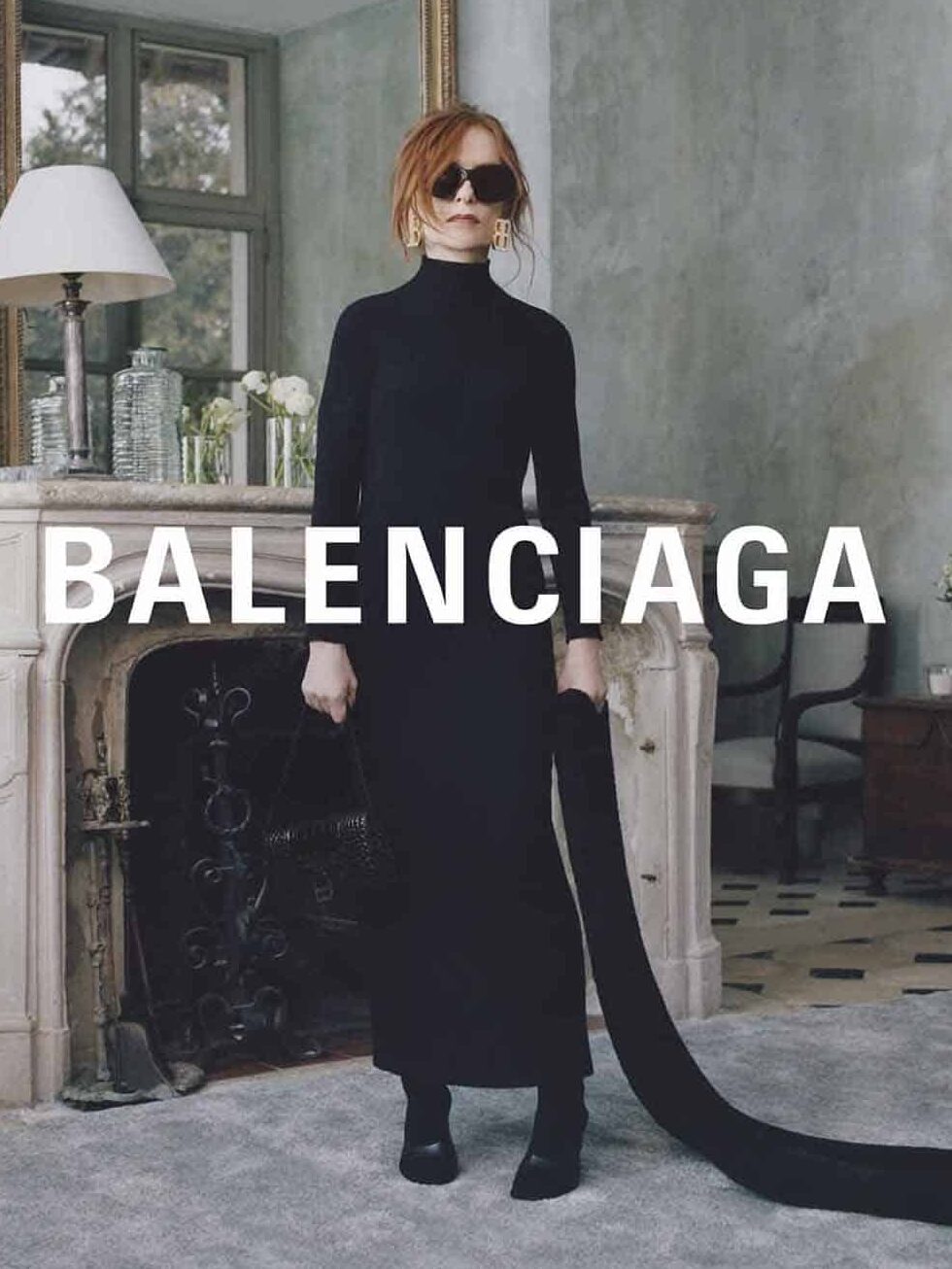What happens when late-stage capitalism, cartoon chaos, and couture meet in a dark alley? A surprisingly cohesive cultural theory, apparently.
It sounds like the start of a bad joke; what do Balenciaga, The Simpsons and Andy Warhol have in common?… But I’ve never been any good with punchlines, so that’s the end of that Dad Joke. What I am better at though, is telling a story.
This one’s about irony, and how a €650 lunchbox, a can of tomato soup, and a cartoon dad eating donuts all end up saying something eerily similar about culture today.
In their own ways, Balenciaga, Warhol, and The Simpsons take the ordinary and make it extraordinary (or at least, extraordinarily expensive). They blur the line between art and advertising, critique and complicity, humour and high fashion. And in doing so, they force us to confront a strange truth about late capitalism: because somewhere between the runway, the gallery, and Springfield, it’s getting harder to tell who’s mocking whom.
Let me get into this one.
Chapter 1: Balenciaga – Irony in Couture
Balenciaga loves a shock factor. First came the duct-tape dress. Then the trash bags, dirty shoes, Ikea mimetic and stuffed teddy bears. What started off as a boutique Spanish brand of the 1980s, then morphed into the playing grounds for Nicholas Ghesquière in the early 2000s and now, under Demna, has evolved into a normcore-obsessed, culture-baiting fashion label with a Warholian flair for consumerism and spectacle.
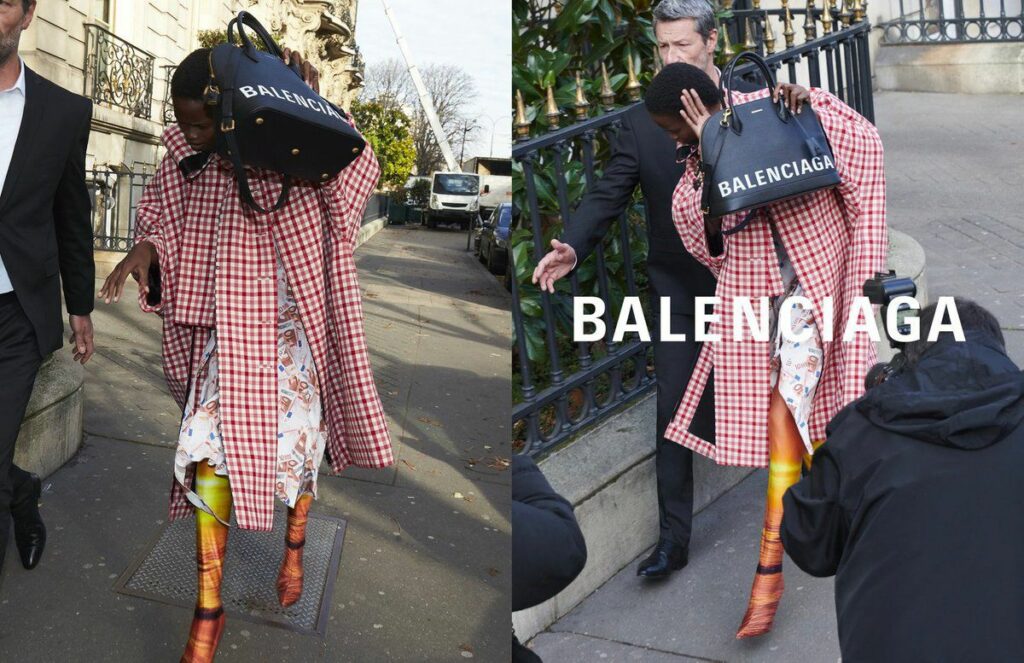
Let’s be honest. For most people, Balenciaga wasn’t a household name until Cardi B said it in a song. I’m convinced there’s a graph out there that correlates Balenciaga sales with Cardi B, J Balvin and Bad Bunny‘s release of “I Like it Like That”… and if there isn’t somebody should create it. “I like those Balenciagas (Those), the ones that look like socks” was arguably the brand’s big pop-culture debut, a single lyric that turned the somewhat niche designer name into pop culture currency.
It worked. The sock shoes went viral. Balenciaga went from high fashion to high visibility, bridging the worlds of fashion and music, exclusivity and pop culture.
Nowadays said ‘bridge’ looks slightly different.
Although we may not be hearing Balenciaga in our songs, we’re seeing it pop in our feeds. Kim Kardashian has become the brand’s most visible mouthpiece, serving as the brand’s test of ideas and a clever influencer campaign to bring Balenciaga’s designs into the mainstream. She was the one who wore the duct tape dress. She tested the all-black matrix sunglasses. The curvaceous body dresses. She was the runway and the ad.
And it worked again.
Balenciaga’s genius wasn’t just making weird clothes. It was knowing that the easiest way to make something culturally relevant wasn’t through scarcity (like luxury has historically done), it was through celebrity. Through exposure. What was once high art had been repackaged for mass consumption, without ever lowering its price tag.
The Message
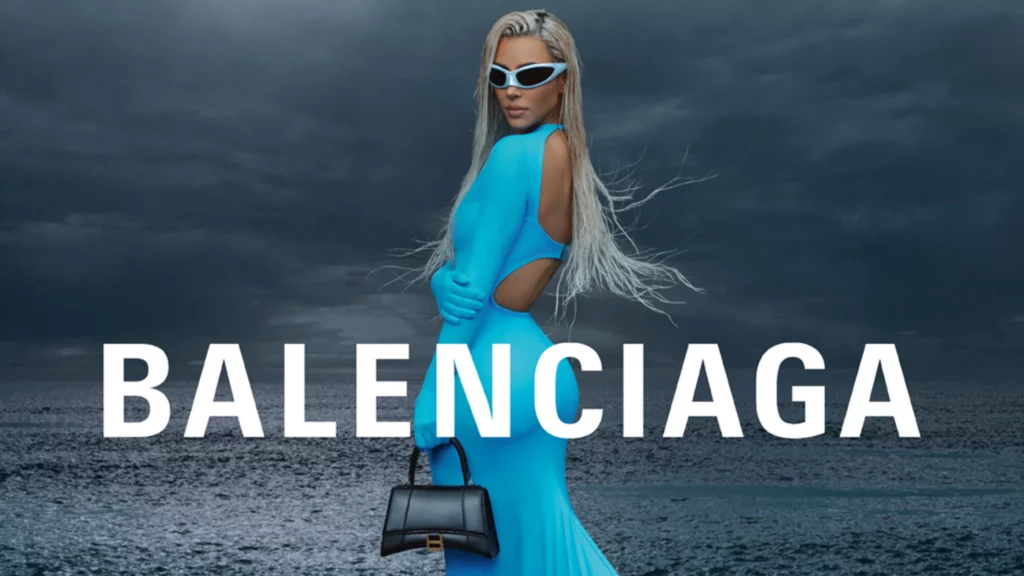
In my personal understanding of fashion history, Moschino’s fresh fragrance was the first time I saw a high-end brand deliberately mess with convention. It didn’t get more coded luxury than a cleaning product shaped perfume bottle being sold at 37GBP.
Having already shifted its advertising strategies to reach a much wider audience, and already familiar with the toying of high and low art, it made sense for Balenciaga to jump onto the bandwagon. For its much-discussed “Gift Shop” campaign, Balenciaga priced a lunch box at €650 and a Starbucks-style sip cup at €250. At one point, it was even selling beer bottles with candles melted into them, now quietly scrubbed from the website. The internet understandably lost it, but was fashion levelling the playing field, or just repackaging the mundane and calling it conceptual?
Demna, Balenciaga’s creative director, has long leaned into anti-fashion irony, borrowing from the visual language of the mundane to expose the absurdity of luxury itself. His work sits in the lineage of Dada, Duchamp, and Warhol: the transformation of readymade, mass-market objects into art and commentary by simply shifting the context. In that light, the lunch box isn’t just an overpriced container, but a provocation.
It’s smart. It’s deliberate. But it also gets tricky.
Because is it critique, or complicity? That’s the real tension. Balenciaga trades on cultural subversion while still cashing in on the very systems it lampoons. The brand courts irony, then sells it back to us in limited drops. And so, is Demna holding up a mirror to consumerism, or is he just very good at making us pay to look into it?
Chapter Two: Andy Warhol – Repetition, Ridicule, Reverence
Nobody worked the blurred line between consumerism, the mundane, and art better than Andy Warhol. Skyrocketing into international fame into the 60s for his use of repetition and tomato soup cans, Warhol brought our cupboard staples into the likes of MoMa. And much like Balenciaga, at a dizzying price tag.
In the postwar U.S., when abstraction still dominated the art world, Warhol’s use of supermarket iconography and celebrity tabloids was seen as both a provocation and a revelation. The Campbell’s Soup Cans (1962) weren’t an homage to Americana so much as a litmus test: could something mass-produced, endlessly familiar, and commercially bland still be worthy of artistic reverence?
Apparently, yes.
Warhol’s work didn’t just blur art and advertising, but made them practically indistinguishable. In doing so, he gave future provocateurs like Demna the blueprint: make the familiar strange, the mass-produced expensive, and the empty meaningful. But while Warhol’s soup cans invited the viewer to question the nature of value, Balenciaga’s €650 lunchboxes seem to ask if we’ll buy the irony along with the product.
Chapter Three: The Simpsons – The Yellow Mirror of Consumerism
Long before Balenciaga leaned into the absurd, The Simpsons had already built its empire there. Premiering in 1989 and running for over three decades, the show parodies laugh and distills the surrealism of the mundane through comedy, then cringe.
And this peculiar approach to entertainment became a hit, broadcast in over 100 countries, quoted in political debates, referenced by economists, and routinely predicting the future. And it’s still going, making it the longest-running American scripted primetime TV show in history. Its genius lies in how it navigates between the banal and the profound, between cartoon logic and real-world absurdity. It’s entertainment, sure, but also a long-running, animated satire.
Google defines satire as “the use of humour, irony, exaggeration, or ridicule to expose and criticise people’s stupidity or vices, particularly in the context of contemporary politics and other topical issues.” In The Simpsons, that looks like a corrupt mayor re-elected year after year, a baby with more emotional intelligence than any adult, or Marge’s coupon obsession and shopping binges.
But nowhere is the show’s satire sharper than in its portrayal of consumer culture. Springfield is a town built on fast food, strip malls, and TV dinners, a place where the solution to any problem is another product.
Chapter 4: It All Comes Together
So, the three people are in a room and you’re still waiting for a punchline I warned you wouldn’t come.
You won’t get one.
But you will get a few takeaways.
(This is not a punchline) 1: Mass culture re-sold as luxury or critique
In the hypothetical joke room scenario, Balenciaga has brought a €650 lunchbox, Warhol’s got some soup cans, and Homer Simpson is selling us fast food. The brief was clear: take something cheap, familiar, even ridiculous, and frame it just right for it to suddenly not be clutter. All three (Demna, Warhol, and Matt Groening) understood that value doesn’t lie in the object, but in its context.
But whilst the Simpsons are effectively broadcasted to everyone, and Warhol is hung in one of the world’s most visited museums, Balenciaga is still sat behind an impeding price point, because for the luxury fashion brand, the satire is not necessarily shared, but sold. Whether Demna is ridiculing the rich or simply selling to them, I’ll leave that for you to decide.
(This is not a punchline) 2: Blurring High and Low Art
We’ll perhaps leave the Simpsons out of this comparison, but both Balenciaga and Warhol know a thing or two about the kitsch. Their work sits in a long tradition of cultural disruption — one that traces back to the Dada movement and its disdain for conventional aesthetics. Much like Duchamp’s urinal, Warhol’s soup cans and Demna’s trash bags ask a pointed question: what makes something art? Is it the object itself, or the context in which it’s placed?
Where Dada mocked meaning and Pop Art elevated the ordinary, Balenciaga repackages the mundane in couture. Warhol brought mass-produced goods into the gallery; Demna sends them down the runway at four-figure prices. Both blur the line between high and low, suggesting that value isn’t intrinsic — it’s constructed. And the more familiar the object, the more provocative its recontextualisation. A soup can, a sock sneaker, a candle in a beer bottle — all made to reflect the world back at us, not quietly, but with the full theatricality of fashion and fame.
(This is not a punchline) 3: The Ordinary as a Provocation
If there’s one thing our three characters share, it’s the desire to be seen. Whether it’s for ratings, sales, or cultural relevance, visibility is the goal. And in a world saturated with spectacle and trying-too-hard distinction, there’s something quietly radical about choosing the ordinary. In this landscape, the mundane doesn’t blend in — it stands out. A lunchbox, a soup can, a donut-loving cartoon dad: all so familiar they become strange again. And in that strangeness, they get noticed.
Jean Baudrillard once said that in late capitalism, objects lose their utility and become signs — symbols of meaning that float free from function. In that logic, Balenciaga’s beaten-up trainers aren’t footwear. They’re a performance. Warhol’s soup cans weren’t pantry staples. They were bait. And Homer Simpson? A distilled avatar of mass culture: so average, he becomes iconic.
Maybe the real joke is this: in a culture obsessed with the extraordinary, it’s the ordinary — framed just right — that gets the last laugh.

